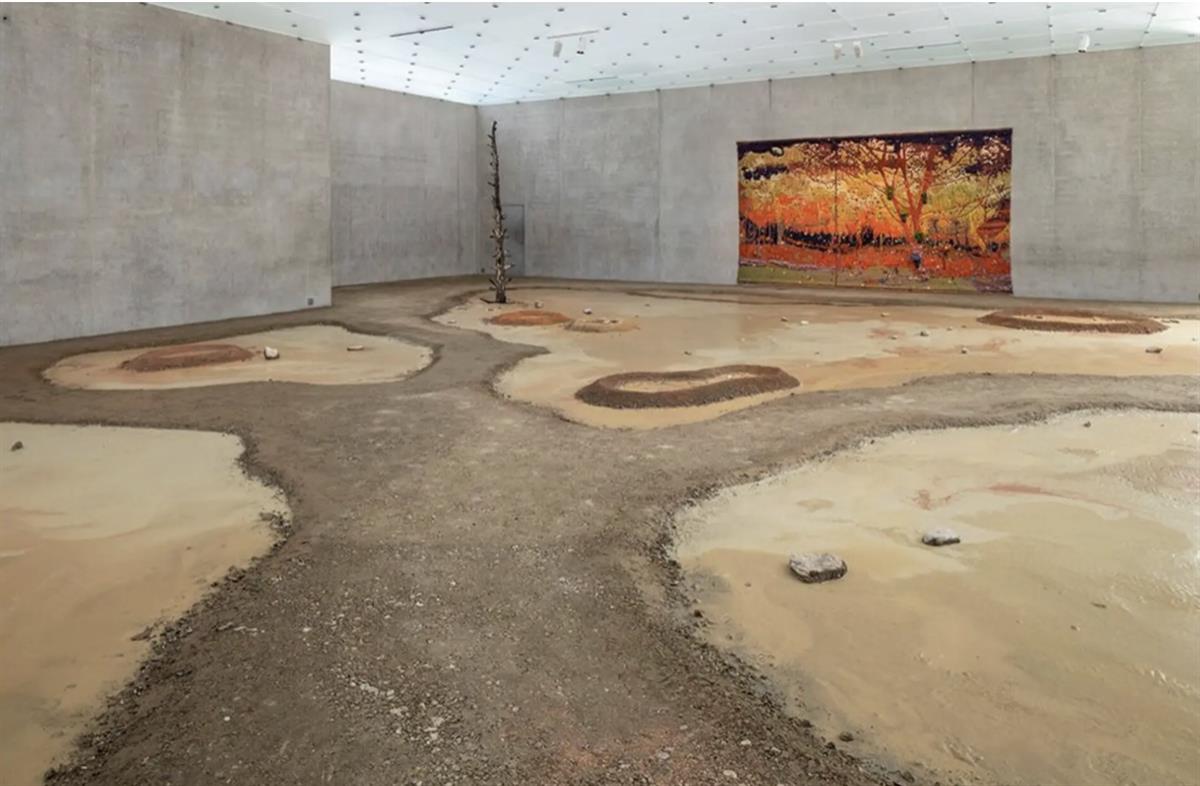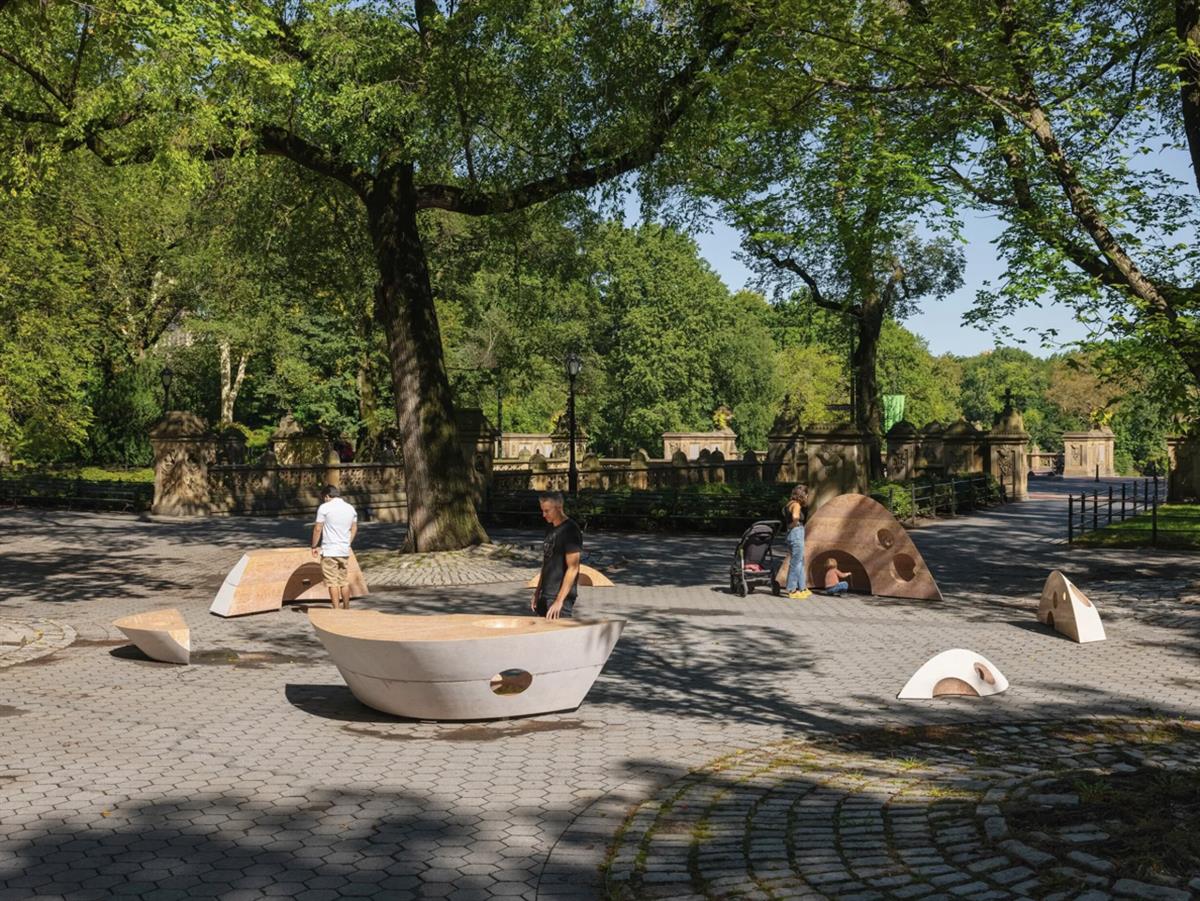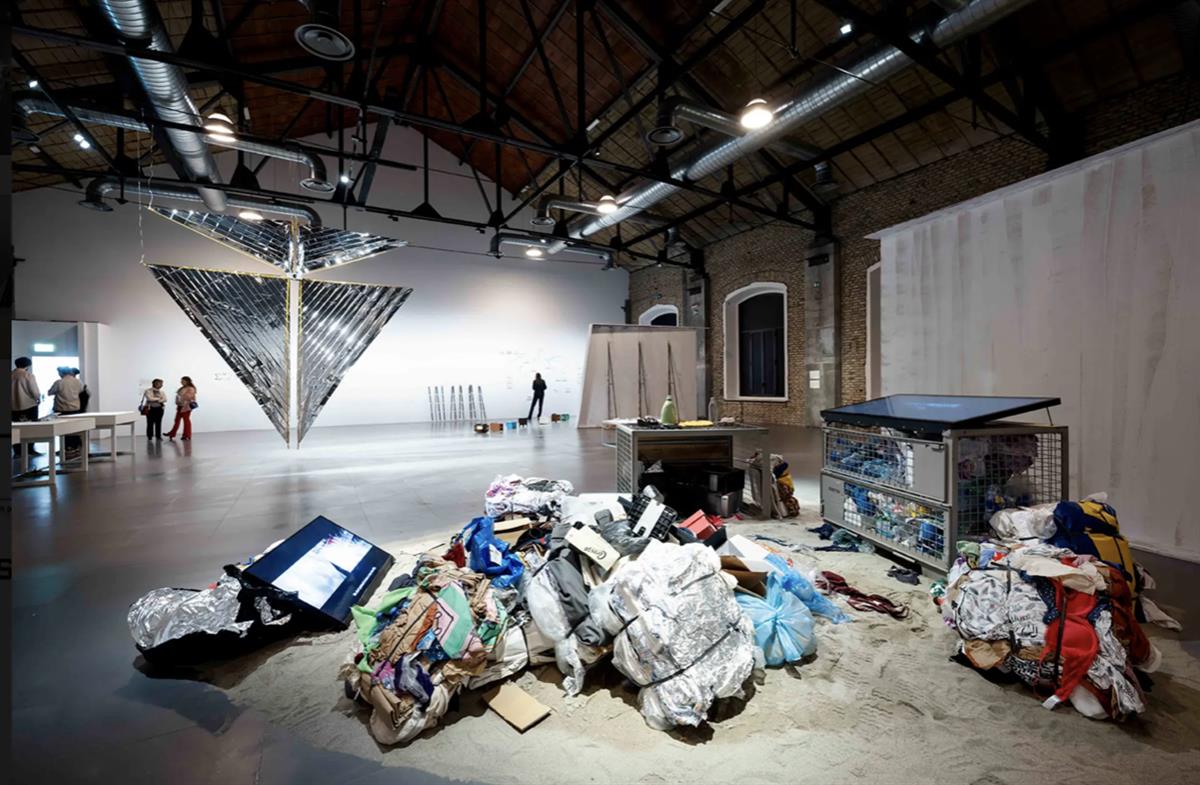 Otobong Nkanga's Unearthed—Sunlight (2021) at Kunsthaus Bregenz, was organised by Art 2030. Photo: Markus Tretter. Courtesy of the artist.
Otobong Nkanga's Unearthed—Sunlight (2021) at Kunsthaus Bregenz, was organised by Art 2030. Photo: Markus Tretter. Courtesy of the artist.
As UN prepares for Cop27, we look at which art initiatives are working alongside governments to create real environmental change
Sponsored by

Louisa Buck
4 November 2022
Share
-----------------------

Green is the new black
In this monthly column, Louisa Buck looks at how the art world is responding to the environmental and climate crisis.
-----------------------
As the 2022 United Nations Climate Change Conference—or Cop27— looms, world leaders, including US President Joe Biden, most of the EU’s premiers and now, at the last minute, the UK Prime Minister Rushi Sunak will gather in Egypt for the now-annual attempt to find global solutions to the climate and ecological crisis. So it seems a timely moment to assess how some international environmental initiatives are harnessing the power of art in myriad ways to bring about meaningful systemic change.
Chief among these is Art 2030, a not-for-profit organisation operating out of Denmark which facilitates artist projects and lobbying initiatives with the aim of tying in art and artists to the UN’s 17 interlinked Sustainable Development Goals (SDGs). These goals were drawn up by world leaders at the UN General Assembly in 2015 as a 'shared blueprint for peace and prosperity for people and the planet, now and into the future.'
SDGs—also known as Global Goals—were included in a UN Resolution, commonly known as Agenda 2030, which reflected the aim for them to be achieved by 2030. These 17 broad, interdependent and hugely ambitious goals cover all social, economic and environmental bases. These include, no poverty, affordable and clean energy, and to protect, repair and sustain life and ecosystems on land.
Even back in 2015 it was always known that even a partial implementation of any of the above was an impossibly tall order—and especially after two years of a global pandemic. But Agenda 30 and the SDGs nonetheless stand as a key aspirational marker for our beleaguered globe and its populations, and even partial successes should be regarded as a success. The core role and importance of Art30 is the way in which it taps directly into the infrastructures of the UN to integrate art and art sector leaders with the Agenda 2030 Resolution and its goals. As its manifesto states: 'In the true spirit of the Global Goals, we believe that uniting the voices and actions of visionaries who believe in the unique ability of art, contribute to reaching our 2030 goals for a strong and sustainable world, leaving no one behind.'
To this end, in 2021, Art 2030 rallied environmentally-conscious art world leaders including Tate Modern director Frances Morris, artist Alfredo Jaar, artist collective teamlab and the international charity the Gallery Climate Coalition to address world leaders at a UN event on culture and sustainable development, organised in collaboration with Unesco.
Having direct access to the UN gives Art2030 considerable profile and lobbying muscle. Between the opening of the 77th UN General Assembly this September and the launch of COP 27 this month, Art 2030’s multiformat Art for for Hope campaign, which launched at the last Venice Biennale with presentations by President of the UN General Assembly and artists including Dahn Voh and Tino Seghal, has been issuing 'changemaker statements' from artists, museum directors, and prominent non-profits which propose a range of actions to be taken by the UN’s membership in response to the climate and environmental emergency, and incorporating SDG’s.
 Interspecies Assembly installed in Central Park, New York City, 2021. Photo: Lance Gerber
Interspecies Assembly installed in Central Park, New York City, 2021. Photo: Lance Gerber
Another strand of their activity is Art for a Healthy Planet, which shares SDG-relevant artworks by a roster of prominent artists across social media on World Earth Day and World Environment Day and has also commissioned significant works that flag up Agenda 2030 such as the touring Interspecies Assembly by Superflex and Dahn Vo’s permanent garden in Niva, Denmark devoted to local biodiversity.
Another significant initiative is S+T+Arts which is funded by the European Commission and aims to bring art, science and technology together to protect the environment. This cross-sector collaboration sees humanities as being central to finding environmental solutions and makes a point of putting artists at the forefront of innovation processes seeking to mitigate the effects of climate change. In February, S+T+Arts selected 21 artists to take part in thematic residencies in 12 European locations, under the umbrella title of Repairing the Present. Each residency was inspired by a specific EU Green Deal or a New European Bauhaus goal and invited artists to come up with creative and interdisciplinary initiatives that proposed sustainable practices for the future of the continent.
The results of these residencies included the Algerian-Italian Samira Benini Allaouat’s prototype for a public garden exclusively illuminated with light coming from a specific type of bacterial cultivation that generates free electricity; Greek artists Ioannis Koliopoulos and Paola Palavidi's nomadic film festival completely powered by agricultural crops which will take place in different agricultural locations each year; and Austrian Markus Jeschaunig’s prototype installation designed to store heat that would otherwise be wasted during daylight hours. Also, Briton Kate Austen and the Italian Fara Peluso have devised a a video sculpture which highlights a circular alternative to extractive models and includes a prototype of biomaterial which could replace vinyl records with a low-carbon way for listeners to acquire sound work.
 Installation view of REWILD at MAXXI. Courtesy of MAXXI
Installation view of REWILD at MAXXI. Courtesy of MAXXI
These and the other artist solutions have been presented in a trio of exhibitions: REWORLD at MEET Digital Culture Centre Milan has now closed but you can still catch REWILD at MAXXI the National Museum of 21st Century Arts in Rome, until 13 November, and RETOOL at ZKM Centre for Art and Media in Karlsruhe, from 18 November to 18 December.
It is a depressing fact that artworks made in response to the environmental crisis often themselves carry a heavy carbon footprint. In what hopefully will have repercussions with art commissioners worldwide, this conundrum is being addressed head-on in A Feral Commons, the new global public art project co-commissioned by four members of the Global Cultural Districts Network (FCDN), a worldwide association of arts districts. These districts are: Alserkal Avenue zone in Dubai; the Kingston Creative Arts District in Jamaica; the Onassis Stegi Multidisciplinary cultural centre in Athens and the Victoria Yards complex in Johannesburg, and each is currently in the process of commissioning a site-specific public work to be unveiled at the end of next year.
Significantly, each of these artworks will not only address their direct surroundings and the climate catastrophe but each also aims to come into being with the lowest environmental impact possible. To this end all the works in A Feral Commons will be subject to a full societal and environmental audit—made in collaboration with the Australian company Urban Art Projects—which will assess and monitor the effect that their construction and installation has both on the environment as well as on each of their surrounding communities. Public art commissioners, take note! So whatever comes out of COP 27 this weekend, at least some sectors of the international art world are continuing to muster forces and work with both local and national leaders in an attempt to make a difference.
SOURCE: THE ART NEWSPAPER